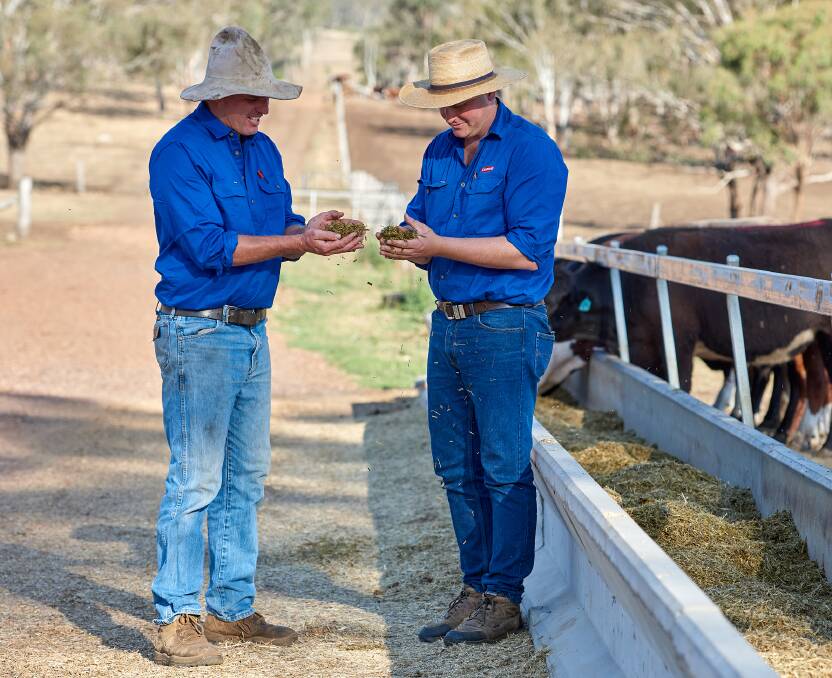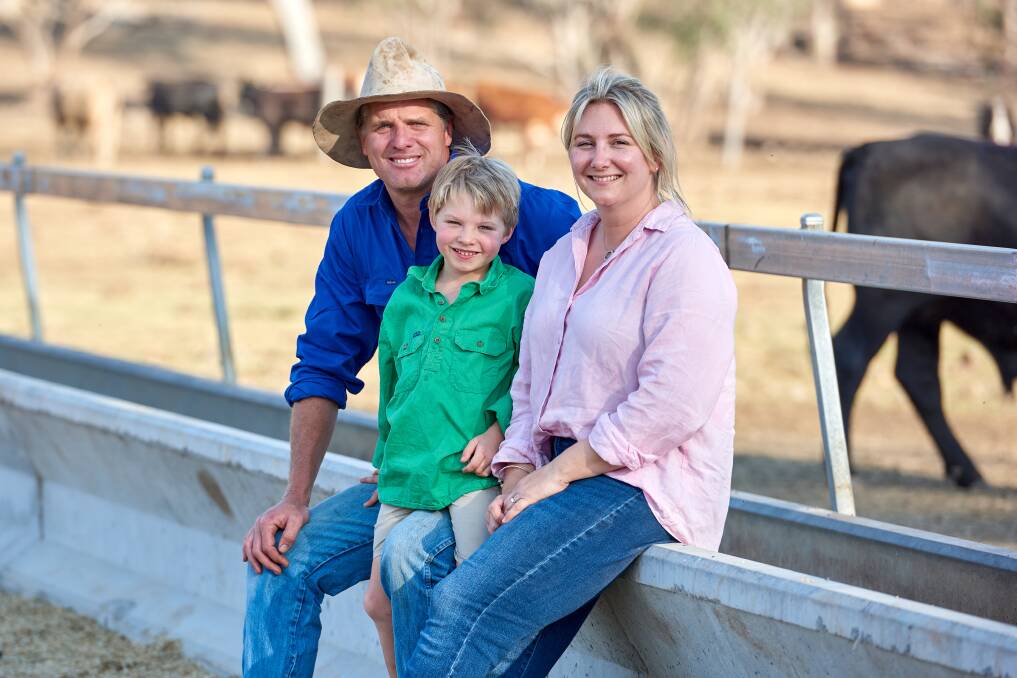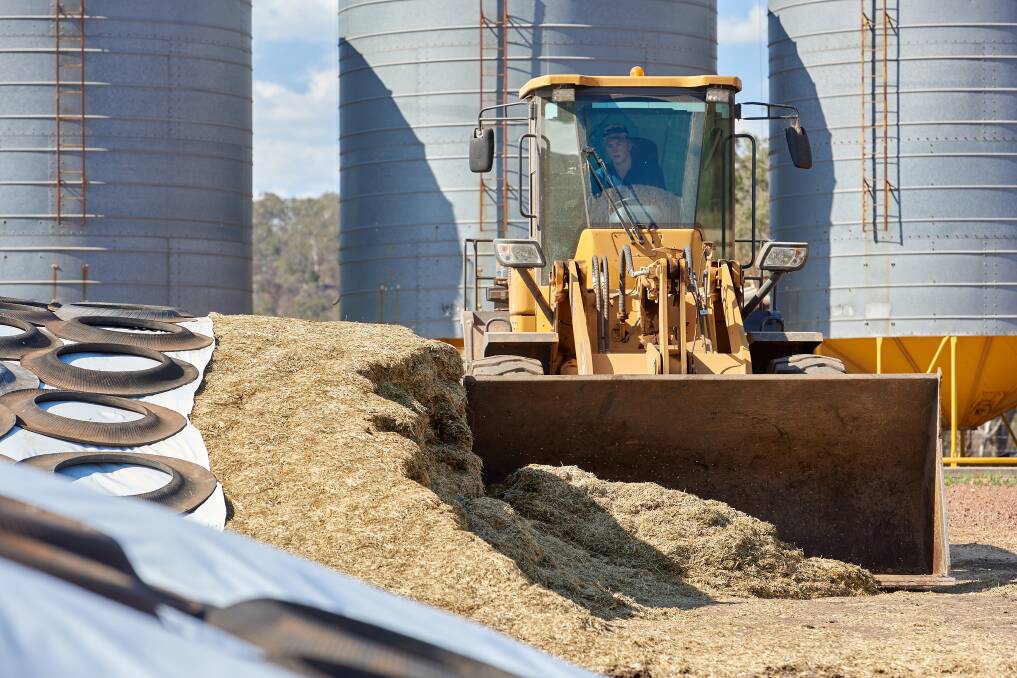Lallemand a go-to for silage

This is branded content for Lallemand Australia
THE CONSTRUCTION of a silage-based paddock assisted feeding system five years ago has enabled Southern Downs beef producers, Karl and Alexis Doré, to turn a 50-cow breeding enterprise into a 800-head backgrounding operation.
Their cell paddocks comprise seven yards ranging from 5 to 40 ha, with the larger pens sown to improved pastures, including Rhodes grass, bisset bluegrass and purple pigeon.
About 250 cattle are on feed at any one time.
British Breed steers weighing about 250kg are fed for 90 to 120 days before being sold to a local feedlot at 400kg liveweight.
"We're targeting an average growth rate of 1.2kg/day but our steers are regularly achieving 1.5kg/day or even 1.7 kg/day due to the quality of the silage," Mr Doré said.
"Once they get going, they just take off!
"Plus, we are doing a much better job with animal health, including a 5:1 vaccine, B12 injection and a long-acting parasiticide at induction.
"We have tracked everything from the onset.
"Our ration costs $210/t as fed, which equates to a feed cost of $2.70/day.
"This can be very profitable although the past few months have been a bit of a challenge."
The Dorés grow a range of crops during winter and sorghum during summer.
About 900 tonnes of sorghum and 600 tonnes of barley are cut for silage each year, while 300 tonnes of barley is harvested for use in the feeding program.
"Our goal is to have 2200 tonnes of sorghum and barley silage on hand at any time," Mr Doré said.
"We made our first barley silage in 2022 and it's rocket fuel."

The silage is harvested and packed by Bony Mountain-based silage contractors, Maxheath Silage.
Harvested crop is treated with MAGNIVA Platinum forage inoculant and sealed using standard black-and-white film, SilageKeeper UV covers and a mix of gravel bags and tyre walls.
MAGNIVA Platinum contains a patented bacterium strain, Lactobacillus hilgardii CNCM I-4785, and the industry benchmark, L. buchneri NCIMB 40788.
This unique combination provides fast-acting 'front end' fermentation with proven 'back end' aerobic stability, allowing silage to be opened earlier and last longer after opening.
A nutritional analysis is conducted on all ingredients before being formulated by Brisbane-based nutritionist, Vincent Posada, of Animal Nutrition Consulting Services.
The ration, which is fed out once a day, contains about 65 per cent silage, along with milled cereal grain, straw/hay, molasses and a concentrate premix pellet.
All told, the Dorés have invested more than $300,000 in troughs, machinery, silos and grain mill.
"It's been a bit of a chicken-and-egg approach," Mr Doré said.
"The original idea was to produce silage to feed to our cows using home-made troughs when it got dry.
"We quickly realised that we were going to need a lot more cattle so that we could utilise the silage face more efficiently - and if we had more cattle, we were going to need better troughs to reduce wastage.
"The pre-cast concrete bunks were only economical if we bought them as a truckload, so we ended up with six, which gave us enough capacity to feed 330 head."
"Ironically, we put in our first sorghum crop four years ago just as the drought broke."
The Dorés have recently set up their own brand - Greenhill Beef - in an attempt to buffer themselves against future market fluctuations.
"We are getting better and better at feeding cattle, ironically just as the market has crashed and our input costs have soared," Mr Doré said.
"We fed 22 steers through to 600 kg and they achieved MSA grade in the mid 60s. We thought, we can do this!
"At the moment, we are growing the steers out to background weights but they are only another 30 or 60 days from slaughter, so why not just carry them through and sell direct to a processor or have them contract slaughtered?
"We might have put the cart before the horse, but we think there's a market for people who want to buy high quality, locally-produced beef that has been ethically and sustainably produced, straight from the producer.
"Toowoomba has a population of 135,000 people and it's only 40 km away.
"We think we can grow this to about 1000 head per year.
"Without silage, we simply could not do this."

Karl and Alexis' story is all the more remarkable given they had limited agricultural experience before they purchased 'Ravensdale', a 320 ha property in the Pilton district between Warwick and Toowoomba, in 2015.
Karl was a commercial pilot with more than 9500 flying hours in his logbook before the COVID-19 pandemic brought his 22-year aviation career to an unceremonious end in 2020.
"I had my last flight in early March and two weeks later I was laid off," he said.
"That wasn't in my career plans but at least we had the farm to concentrate on."
The Dorés initially ran 50 Angus and Wagyu crossbred cows.
"The onset of the drought in 2018 was a wake-up call," Mr Doré said.
"We started supplementary feeding and my neighbours said we should think about silage.
"They put us in touch with a silage contractor, who in turn, put us in touch with Lallemand Animal Nutrition.
"Their Technical Services Manager, Nathan Lister, is now my 'go-to' man when it comes to silage."
This is branded content for Lallemand Australia


